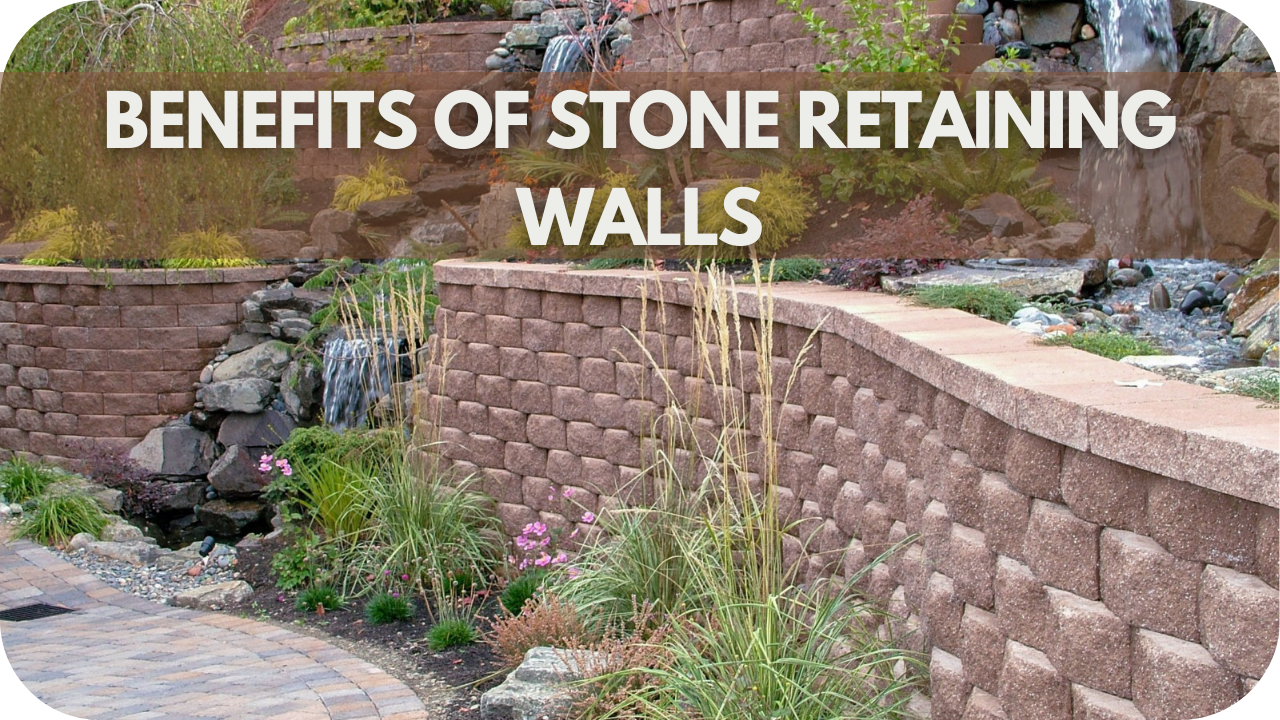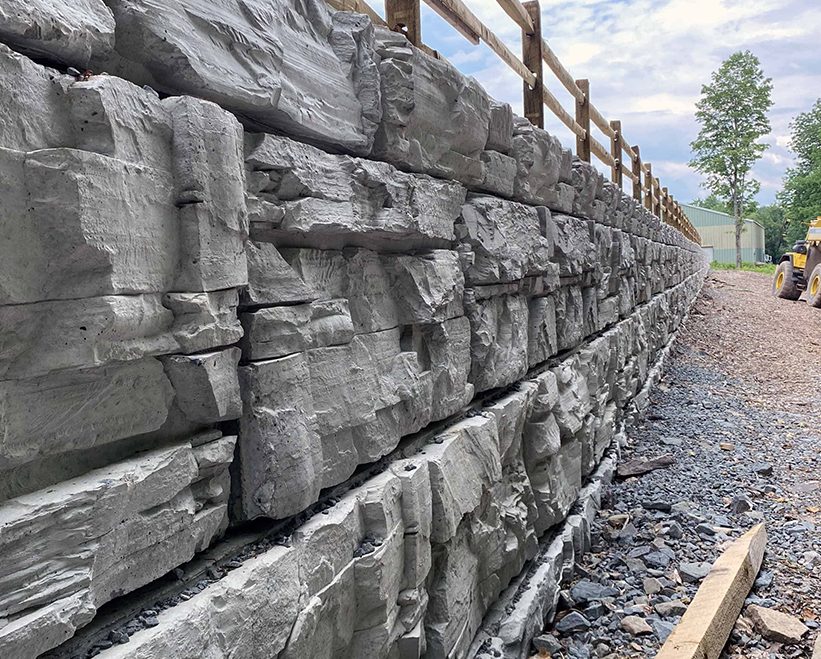Easy-to-follow guide to installing OKC Precision Retaining Walls on a slope
Easy-to-follow guide to installing OKC Precision Retaining Walls on a slope
Blog Article
Trick Factors To Consider for Structure Reliable Retaining Walls in Your Yard
When you're taking into consideration developing a keeping wall surface in your backyard, it's crucial to think concerning several key elements. The wall surface's objective, the materials you'll use, and the particular dirt problems can all affect its effectiveness and longevity. You'll also need to browse local building codes and strategy for proper water drainage. However exactly how do you ensure your layout not only meets these demands however also enhances your landscape? Allow's check out the essential steps with each other.
Understanding the Function of Your Retaining Wall
When you think of building a preserving wall, consider its primary function: maintaining soil and stopping erosion. Retaining walls provide essential support for sloped landscapes, aiding to keep soil integrity. You'll find they're important in areas where water drainage might otherwise remove soil, resulting in costly fixings and landscape damage.
By keeping back earth, these walls produce level surfaces for gardens, patio areas, or paths. This not just boosts your yard's appearances however likewise advertises much better water drainage, minimizing water pooling in undesirable areas. If you're handling high slopes, a sound retaining wall can protect against landslides, making sure security for you and your residential or commercial property.
Ultimately, understanding the purpose of your retaining wall will certainly direct your style choices and help you create a useful, sturdy framework that meets your needs. So, take a minute to review your landscape; it'll settle in the long run.
Selecting the Right Materials
When choosing materials for your retaining wall, you'll wish to take right into account durability, appearances, and expense. Each element plays an essential function in guaranteeing your wall surface stands the examination of time while looking great and suitable your budget. Let's check out just how to make the very best selections for your job.
Material Resilience Variables
Selecting the best materials is important for the longevity and effectiveness of your retaining wall surface, considering that their longevity directly impacts the wall surface's ability to hold up against environmental anxieties. Begin by considering your local climate; materials like concrete and rock stand up to moisture and temperature fluctuations well. If you live in an area vulnerable to heavy rainfalls, choose materials with good drain buildings, like crushed rock or porous blocks, to avoid water buildup.
Some products perform much better in certain soil kinds, so it's crucial to match them as necessary. Picking sturdy materials assurances your retaining wall surface stands strong, safeguarding your yard for years to come.
Aesthetic Design Selections
Durable products not just ensure your retaining wall's structural honesty yet also play a key role in its visual appeal. When selecting the right materials, assume about how they enhance your landscape. Natural stone offers a timeless, rustic appearance, while concrete blocks can supply a streamlined, contemporary finish. You might likewise take into consideration using hardwood for a cozy, natural feeling. Color and appearance matter, too; pick shades that harmonize with your home and yard. Don't forget concerning the wall's form-- bent walls can produce a softer appearance, while straight lines can really feel a lot more organized. By thoroughly choosing materials that straighten with your aesthetic vision, you'll boost your outside area while ensuring your wall surface stands solid against the elements.
Cost-Effectiveness Analysis
Selecting the appropriate materials for your retaining wall isn't just about appearances; it's additionally vital for your spending plan. When picking materials, take into consideration both in advance costs and lasting resilience.
Don't neglect to aspect in maintenance costs. Some products, like natural rock, can include elegance and need less upkeep, while others might require normal treatments
Eventually, weigh the advantages and disadvantages of each choice versus your budget plan and the wall surface's intended function. Spending sensibly in products now can protect against expensive issues down the road. Pick products that stabilize price and efficiency effectively.
Analyzing Soil Problems and Water Drainage
As you begin your task, assessing soil problems and drainage is essential for the success of your retaining wall. Begin by examining the sort of soil in your yard. Sandy soil drains well however does not have stability, while clay dirt can retain wetness, resulting in pressure on your wall. Evaluate the soil's dampness content by digging a little hole and observing just how quickly it dries.
Next, assess the incline of your lawn. If water naturally flows toward your wall, you'll need to apply a water drainage service to stop erosion and stress build-up. Think about mounting perforated pipelines or crushed rock backfill behind the wall surface to promote drainage.
Finally, observe any kind of neighboring trees or plants; their roots can influence soil stability. By go to this web-site recognizing your soil conditions and executing correct drainage, you'll create a solid foundation for your retaining wall that stands the examination of time.
Adhering To Local Building Regulations
Prior to you start building your retaining wall surface, you need to research local policies to guarantee compliance. It's important to recognize what permits you have to obtain, as this can save you from expensive fines or needing to renovate your job. Taking these steps seriously will help you develop a risk-free and reliable structure.
Research Study Local Rules
Recognizing local laws is crucial when intending your retaining wall project, specifically because developing codes can vary greatly by place. Look for guidelines on wall elevation, products, water drainage systems, and architectural honesty. By doing your research study upfront, you can assure your retaining wall meets all required codes and blends perfectly into your lawn.
Get Needed Authorizations
Once you've investigated neighborhood guidelines, the next action is to acquire the required licenses for your retaining wall task. This process guarantees your wall surface conforms with building ordinance and security criteria. Get to out to your local building authority to discover what allows you require. They may require particular plans or engineering evaluations, particularly for larger walls. Be prepared to send in-depth illustrations, consisting of measurements and products. Do not fail to remember to examine if your job influences drain or bordering residential or commercial properties, as these aspects may call for added permits. Securing the right authorizations can conserve you from expensive fines or needing to dismantle your wall surface later on. Keep in mind, following the rules currently will cause a smoother building experience.

Planning the Design and Aesthetic Appeal
As you start intending the style and looks of your retaining wall, think about how it will integrate with the bordering landscape. Think of the products you'll use-- rock, brick, or concrete-- and exactly how they'll complement your home's design and the natural environments in your backyard. Pick colors and structures that blend effortlessly with existing functions like outdoor patios, pathways, or yards.
Next, imagine the wall surface's form and elevation. Curved walls can soften a stiff landscape, while straight lines might convey a more modern appearance. Do not neglect to integrate plants and greenery around the wall surface for a natural touch; this can boost its allure and integrate it more right into the setting.
Last but not least, keep in mind functionality. Your design must not just be visually pleasing yet additionally serve its objective effectively. By attentively preparing these aspects, you'll develop a maintaining wall that boosts your lawn's beauty while satisfying its structural duty.
Calculating Height and Density Requirements
To construct a sturdy retaining wall, you require to accurately calculate its height and density demands based on the dirt problems and the elevation of the slope it will certainly sustain. Beginning by reviewing the incline's angle and the kind of soil, as different soils exert differing amounts of pressure.
For walls over four feet high, consider a thickness of at the very least 12 inches. If the wall is taller, boost the thickness proportionally to preserve stability.
Next, determine the height of the wall by gauging the upright range it requires to keep. For each foot of elevation, you need to normally prepare for a density of one-third of the wall's height.
Constantly keep in mind to account for extra aspects like drain and backfill, which can affect your wall surface's style. Proper calculations currently assure your retaining wall stands solid and lasts for several years to find.
Upkeep and Long Life Considerations
While preserving your retaining wall might feel like a low priority, disregarding it can bring about significant problems over time. Regular assessments are essential; look for splits, bulges, or any type of indications of water damages. Resolving these problems early can save you from expensive repairs later on.
Keep an eye on drainage systems, as well. Blocked drains can trigger water to develop, exerting stress on your wall and compromising its stability. Clear particles and assurance correct flow to preserve durability.
You might also wish to assess securing your wall surface to secure it from wetness and weathering. Relying on the product, this may call for reapplication every few years.
Lastly, landscape design around your wall surface can support its stability. Avoid growing big trees close by, as their origins can threaten the structure. With positive upkeep, your retaining wall can offer you well for years to find.

Frequently Asked Inquiries
Can I Construct a Retaining Wall by Myself, or Should I Employ a Specialist?
You can most definitely build a maintaining wall surface yourself if you have the right tools and expertise. However, employing an expert warranties it's done properly, especially for bigger or more complex frameworks. Consider your ability degree before determining.
What Are one of the most Usual Errors Made When Building Retaining Walls?
When developing retaining walls, you might neglect proper drain, avoid making use of the right materials, or forget why not try these out reinforcement. These usual blunders can lead to structural failure, so take your time and strategy meticulously to prevent issues.
How Do I Know if My Retaining Wall Needs Reinforcement?
You'll recognize your retaining wall surface needs support if you see cracks, leaning, or bulging. Examine for water merging behind it or soil disintegration near the base. Address these indicators promptly to avoid more damages.
What Plant kingdom Are Suitable for Landscaping Around a Retaining Wall?
When landscaping around a preserving wall surface, take into consideration making use of low-maintenance plants like succulents, ornamental grasses, or slipping ground covers - OKC Precision Retaining Walls. They'll thrive in those problems and include beauty while protecting against dirt erosion around your wall surface
Exactly How Can I Prevent Erosion Around My Retaining Wall?
To stop disintegration around your retaining wall surface, you can plant ground cover, use compost, and set up drain systems. Consistently look for water build-up and adjust landscaping to reroute overflow away from the wall surface.
Report this page